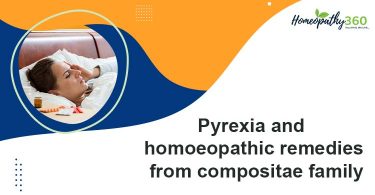Non-communicable diseases (NCDs) are the chronic diseases which are the leading causes of death globally, killing more people each year than all other causes combined. Contrary to popular opinion, available data demonstrate that nearly 80% of NCD deaths occur in low- and middle-income countries. Despite their rapid growth and inequitable distribution, much of the human and social impact caused each year by NCD-related deaths could be averted through well-understood, cost-effective and feasible interventions. Of the 57 million deaths that occurred globally in 2008, 36 million – almost two thirds – were due to NCDs, comprising mainly cardiovascular diseases, cancers, diabetes and chronic lung diseases.1
The combined burden of these diseases is rising fastest among lower-income countries, populations and communities, where they impose large, avoidable costs in human, social and economic terms. About one fourth of global NCD-related deaths take place before the age of 60. NCDs are caused, to a large extent, by four behavioral risk factors that are pervasive aspects of economic transition, rapid urbanization and 21st-century lifestyles: tobacco use, unhealthy diet, insufficient physical activity and the harmful use of alcohol. The greatest effects of these risk factors fall increasingly on low- and middle-income countries, and on poorer people within all countries, mirroring the underlying socioeconomic determinants. Among these populations, a vicious cycle may ensue: poverty exposes people to behavioral risk factors for NCDs and, in turn, the resulting
NCDs may become an important driver to the downward spiral that leads families towards poverty. As a result, unless the NCD epidemic is aggressively confronted in the most heavily affected countries and communities, the mounting impact of NCDs will continue and the global goal of reducing poverty will be undermined.
A major reduction in the burden of NCDs will come from population-wide interventions, which are cost effective and may even be revenue-generating, as is the case with tobacco and alcohol tax increases, for instance. But effective interventions, such as tobacco control measures and salt reduction, are not implemented on a wide scale because of inadequate political commitment, insufficient engagement of non-health sectors, lack of resources, vested interests of critical constituencies, and limited engagement of key stakeholders. For example, less than 10% of the world’s population is fully protected by any of the tobacco demand-reduction measures contained in the WHO Framework Convention on Tobacco Control. Improved health care, early detection and timely treatment is another effective approach for reducing the impact of NCDs. However, appropriate care for people with NCDs is lacking in many settings, and access to essential technologies and medicines is limited, particularly in low- and middle-income countries and populations. Many NCD-related health-care interventions are cost effective, especially compared to costly procedures that may be necessary when detection and treatment are late and the patient reaches advanced stages of the disease. Health systems need to be further strengthened to deliver an effective, realistic and affordable package of interventions and services for people with NCDs. As the magnitude of the NCD epidemic continues to accelerate, the pressing need for stronger and more focused international and country responses is increasingly recognized by Member States. Much has been learnt about the causes, prevention and treatment of NCDs over the past three decades, as important achievements have been made in reducing mortality in many high income countries; the evidence base for action is steadily mounting and global attention to the NCD epidemic is intensifying.
HAHNEMANN’S CONCEPTION
Search for the action of Homoeopathic medicines on all types of diseases were the prime concern for Dr.Hahnemann . His observation of applied law of similia proved to be a turning point in the practice of medicine. Initially this conception of law of similia was applied on all types of sickness based on the symptomatic similimum. Gradual accumulation of experiences later on proved that simply relying on the presenting totality of sickness may not be applied on all types of diseases. For ten years he toiled night and day to discover the reason why the homoeopathic remedies, then known, did not affect a true cure in disease of the chronic nature. This lead to the discovery of true nature of chronic disease. Whereas Homoeopathic medicines work well in acute nature of diseases prescribed on the presenting totality, he observed that chronic diseases require special attention and more investigation into the deeper plane of life.
He tells us in Organon of Medicine in aphorism 77 that, by Chronic Diseases, he does not mean those from constant exposure to unavoidable noxious influences;-habitual indulgence in excesses in eating and drinking :-the constant want of the necessaries of life :-unhealthy dwellings; -or those from want of fresh air and exercise; -from over-taxed mind and body; -from continued mortifications and troubles. “All these,” he says, “will vanish of their own accord under improved conditions…provided that there is no chronic miasm pervading the organism. They do not deserve the name of chronic diseases”.
For Dr.Hahnemann, “True, natural Chronic Diseases are those which owe their origin to a Chronic parasitic miasm. He says, they constantly extend; and, notwithstanding the most carefully-regulated mental and bodily habits, they never cease to torment their victim with constantly-renewed suffering to the end of his life (if left to themselves without the aid of special remedies for their relief). These are…the source of great suffering to the human race. The most robust constitution, the best of habits, and the greatest energy of unaided vital force are unable to resist them.
Dr Hahnemann writes “Hitherto only syphilis was known to some extent as one of these chronic miasmatic diseases, which, if left uncured, will become extinct only with life. “Sycosis (the condylomatous disease) if left to itself uncured, is likewise inextinguishable by vital force, and was not hitherto recognized as an internal, chronic, miasmatic disease of a peculiar nature as it undoubtedly is”. By his sycosis he meant that It is his second chronic venereal. But He found both syphilis and gonorrhoea easily curable, provided they were not complicated, with his third chronic disease, psora. It may be noticed that Hahnemann’s psora stands-an Ogre, at the threshold of his Chronic Diseases, and has turned away many from the Temple of Healing. Of Hahnemann’s three named Chronic Diseases, his psora was for him, “the hydra-headed, most wide-reaching and difficult of all the chronic parasitic microbic diseases.” He calls it “the oldest, most universal and most pernicious chronic parasitical disease…an ancient, smouldering contagion…of incomparably greater significance than either of the above named chronic miasms” (Syphilis and Gonorrhoea).
Hahnemann tells us that, “Chronic diseases, only, are the test of the genuine healing art, because they do not of themselves pass into health.” “Slight ailments that have come quickly, pass way with or without medicine-evidently by the inherent powers of the organism : tough, with medicine, acute diseases must distinctly yield more quickly and permanently than when left to themselves, if what can be called a cure is accompanied.”
“Unless the physician imitates my method he cannot expect to solve the highest problem of medical science, that of curing those important chronic diseases, which have remained uncured until I discovered their true character and proper treatment.”
Gist of Hahnemann conception about Chronic Diseases:
- “All chronic Diseases originate and are based on fixed chronic miasms, which enable their parasitical ramifications to spread through the human organism, and to grow without end.” (Ch. Dis. 1.23).
- “The chronic miasms are semi-vital morbid miasms of a parasitical nature, which can only be neutralised and annihilated by a more powerful remedy producing analogous effects.” (Ch. D. 1.53.)
- Treatment must go on till the cure is complete, “for the least remains of a germ may eventually reproduce the full disease.”
SCOPE OF HOMEOPATHY
- It has been observed and well accepted that Homoeopathic medicines have no side effects as reported for the some antibiotics medicines.
- Easy mode of administration and palatability of homoeopathic medicines and therefore better treatment adherence particularly in children.
- Effectiveness has been proved in most of the research trials.
- Actions of Homoeopathic medicines are realistic and based on the individual personality and they respond with most comprehensive way.
- Observational studies consistently report highly positive effects.
- There are effective response of Homoeopathic medicines on animals and on plants proves the effectiveness as not of the placebo.
- Homoeopathic medicines because of its dynamic nature have the capacity of penetrating into the deeper plane of life thus most suitable for the chronic diseases.
- Cost effectiveness of homoeopathic therapy.
- Lack of diagnosis of the patient is not a hindrance for treatment.
- Aims at the individual patient and not merely at disease only.
- Holistic approach towards patient’s complaints.
SUMMARY
- Homoeopathy has the great potential in treatment of Non communicable diseases and can be safely applied along with other essential medicines.
- Prevention and control of many of the NCD can be done with great efficacy and safety
- While planning the organization of health services, the goal should be to shift the centre of gravity of chronic care delivery progressively towards the base of the health care pyramid by including the Homoeopathic system of Medicine.
- By strengthening the capacity for care by self, family, community, paramedic, and by encouraging guidelines based practice and a rational referral-follow-up pattern which obviates the need for frequent revisits to secondary and tertiary care providers. Referral system for the Homoeopathy for NCD should be prioritized.
Bibliography
- Hahnemann – Chronic diseases Vol I & II, B. Jain Publishers, New Delhi.
- Hahnemann-Organon of Medicine-6th edition, B. Jain Publishers, New Delhi.
- Hahnemann-Lesser Writing, B. Jain Publishers, New Delhi.
- Research Policy, Central Council for Research in Homoeopathy.
- World Health Organization, Non-Communicable Diseases Country Profile 2011




